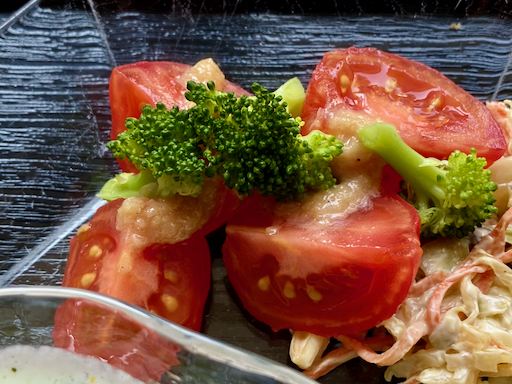This is another variation on the theme of blueberry muffins. When we got less than perfect (in terms of the shape/consistency and sourness) blueberries, my wife slowly cooked and then pureed them using the immersion blender. You could add sugar and the puree worked well when added to our morning yogurt. My wife tried using blueberry puree in muffins and found that it really added a blueberry flavor in conjunction with the whole blueberries.
At one point she found the whole blueberries were gone but she had more puree than she could use in the morning yogurt. She didn’t want the puree to go bad so she decided to made a blueberry muffin “sans” the whole blueberry but just using the leftover puree as the liquid in the batter. She made this blueberry muffin with the puree as the blueberry “representative” and the addition of pecans to see how it works. As you can see below, the entire muffin turned sort-of purple.
1 cup toasted pecans).
2 ½ cups all-purpose flour
2 ½ teaspoons baking powder
1 teaspoon kosher salt
1 cup granulated sugar
2 eggs room temperature
4 tablespoons unsalted butter melted and cooled slightly
¼ cup vegetable oil
1 cup combination of buttermilk and blueberry puree (i.e. however much puree is available combined with buttermilk to make 1 cup) room temperature
(Optional) finely grated zest of 1 lemon. We did not use this.
Directions:
To make the blueberry puree, bring 1 cup of blueberries to a very low simmer in a small saucepan. Cook until the berries have broken down. Puree using an immersion blended. Cool to room temperature.
Whisk the dry ingredients (flour through salt) in a large bowl. Whisk 1 cup sugar and eggs in medium bowl until thick and homogeneous. Slowly whisk in the butter and oil until combined. Whisk in buttermilk/blueberry puree, lemon zest (if using) and vanilla until combined. Fold wet mixture into flour mixture until just moistened (lumpy is fine). If the batter seems loose, let it mellow for 5 minutes, and it will thicken up (picture below).





















